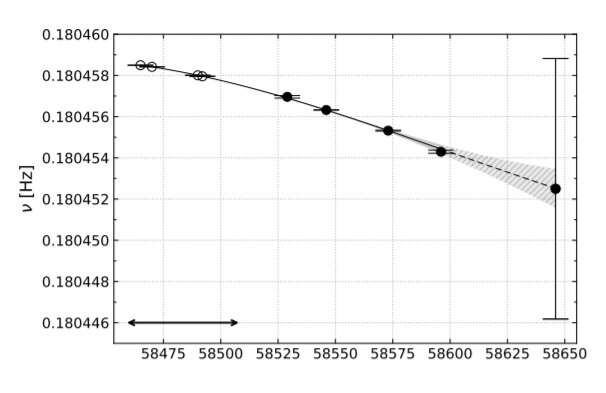October 4, 2021 report
Japanese astronomers investigate magnetar XTE J1810-197

Using four radio telescopes, astronomers from the National Astronomical Observatory of Japan and elsewhere have conducted multi-frequency multi-epoch radio observations of a radio-loud magnetar known as XTE J1810-197. Results of the study, presented September 24 on the arXiv pre-print repository, could help us better understand the nature of this peculiar object.
Magnetars, classified as a subset of pulsars, are neutron stars with extremely strong magnetic fields, more than 1 quadrillion times stronger than the magnetic field of our planet. Decay of magnetic fields in magnetars powers the emission of high-energy electromagnetic radiation, for instance, in the form of X-rays or radio waves.
Although pulsars often exhibit radio pulsations, so far only 6 out of about 30 confirmed magnetars have shown detectable radio pulses. One of them is XTE J1810-197, which was detected as the first radio-loud magnetar. It is also the first transient magnetar identified with a significant increase of its X-ray luminosity.
XTE J1810-197 has a rotational period of 5.541 seconds and a spin-down rate of 0.0283 nanoseconds/second. The magnetar's dipole magnetic field strength was measured to be 130 trillion G, while its characteristic age is approximately 31,000 years. Radio pulsations of this source were first detected in 2006.
Observations of XTE J1810-197 indicate that it experienced a radio-bright period in 2005-2008, after which a long, radio-silent phase started that lasted about a decade. Intense radio pulses from XTE J1810-197 returned in December 2018, which triggered many follow-up observations of this source. One of them was carried out by a team of astronomers led by Sujin Eie.
"We performed quasi-simultaneous observations with VERA (22 GHz), Hitachi (6.9 GHz and 8.4 GHz), Kashima (2.3 GHz), and Iitate (0.3 GHz) radio telescopes located in Japan to trace the variability of the magnetar radio pulsations during the observing period from December 13, 2018 to June 12, 2019," the researchers wrote in the paper.
The observations detected significant pulsed emissions at the frequency range of 2.3—22 GHz. It was noted that the radio pulsations generally became fainter during the whole observational campaign.
The study found that the change of the spin frequency derivative has continuously weakened since the radio outburst. The duty cycle of XTE J1810-197 during the observed outburst was found to be about 5 percent, what is analogous to its previous outburst. Moreover, the results show that pulse widths tend to become narrower as the observing frequency goes higher.
The researchers also obtained the negative spectra in 2.3—22 GHz with the average spectral index of −0.85 at 2.3—8.7 GHz. According to them the data suggest that XTE J1810-197 would have a bimodal spectrum with a GPS feature at lower 7.6 GHz and a second peak at over 22 GHz.
More information: Sujin Eie et al, Multi-frequency radio observations of the radio-loud magnetar XTE J1810-197. arXiv:2109.11739v1 [astro-ph.HE], arxiv.org/abs/2109.11739
© 2021 Science X Network




















